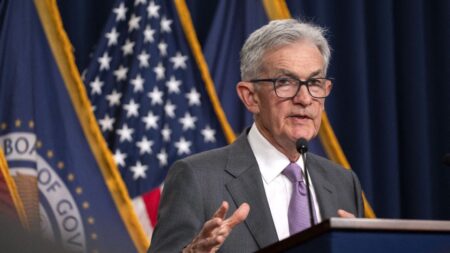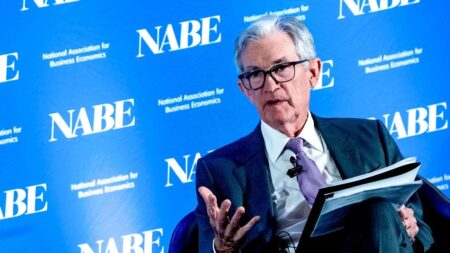Sydney (Reuters) – Australia’s central bank on Tuesday trimmed its forecasts for inflation and economic growth but signaled demand was still running ahead of supply, suggesting it would be in no rush to cut interest rates.
In its quarterly Statement on Monetary Policy, the Reserve Bank of Australia (RBA) said inflation was now expected to be back in the central bank’s 2-3% target range in late 2025 and reach the midpoint of 2.5% in 2026.
“Inflation is expected to decline a little quicker than previously thought,” said the RBA. “But, services inflation remains high and is expected to decline only gradually as domestic inflationary pressures moderate.”
The central bank noted that while the growth in demand has slowed, the level of demand is still robust and is assessed to be above the economy’s capacity to supply goods and services, thereby creating inflationary pressures.
Overall, policymakers judged the risks to the domestic outlook were broadly balanced.
The RBA is widely expected to hold interest rates steady on Tuesday at 4.35%, having last hiked in November, but the focus will be on whether the central bank retains a hiking bias after recent downside surprises on inflation and growth.
Markets have already priced out any chance of further hikes and wagering a cut in June is a coin flip. Futures imply about two quarter-point cuts by the end of the year.
Consumer inflation, which slowed to 4.1% in the fourth quarter, is now forecast to be a fraction lower at 2.8% by the end of 2025, and is seen hitting 2.6% by mid 2026. The key trimmed mean measure of inflation is also seen slowing at much the same pace.
Reflecting weak consumer spending, the economy was now expected to expand at an annual 1.3% pace in the June quarter this year, down from 1.8% previously. Growth for end 2024 was lowered to 1.8%, while the forecast for late 2025 and June 2026 were the same at 2.4%.
That in turn meant unemployment rate – which was running at 3.9% – is now seen to hit 4.4% in June 2025 and to remain there for the rest of the forecast period. The forecasts, the central bank judged, were consistent with a return to full employment without adding to inflationary pressures.
The projections were based on the technical assumptions that interest rates remain around the current level of 4.35% until mid-2024, before falling to 3.9% by the end of this year. Markets are pricing in around 40 basis points of easing.
The cash rate is assumed to then decline to 3.2% by mid 2026.
Read the full article here










